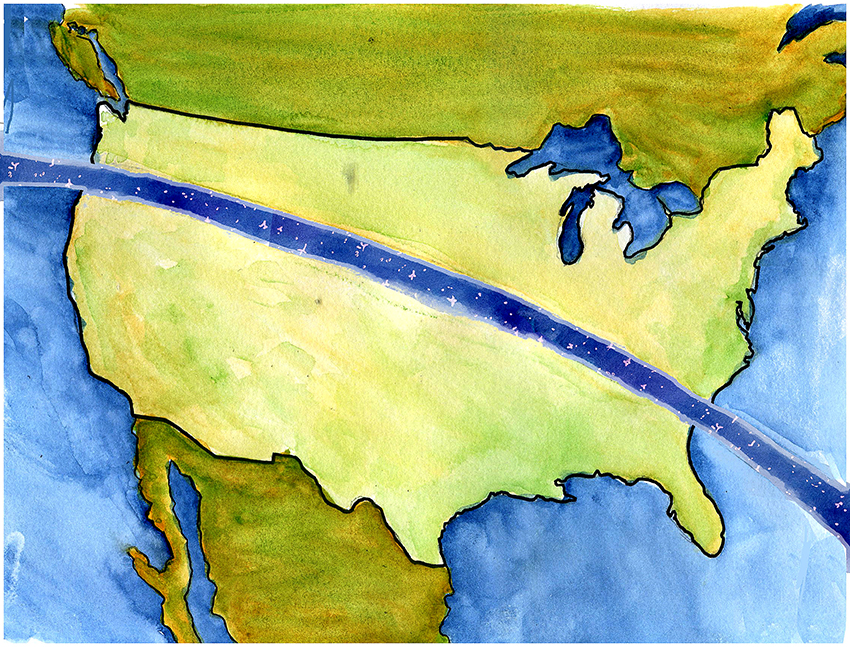In less than three weeks, a total solar eclipse will cross the country. Here are some quick facts for the curious observer.
What causes an eclipse?
The sun is 400 times larger than the moon, but it is also 400 times farther away from Earth. Because of this astronomical quirk, when the sun, moon and Earth line up perfectly, the moon blocks the light of the sun and produces a solar eclipse. In the center of the moon’s shadow on Earth, called the umbra, a total solar eclipse is visible. Outside the center, or in the penumbra, observers can see a partial solar eclipse, where the sun appears to have a shadow over part of its surface.
What will we see during the eclipse?
Those in the path of totality — the area that lies directly in the shadow of the moon — will be able to see the moon completely block the sun, revealing the sun’s outer atmosphere, which appears as white rays surrounding the blacked-out star. The sky will darken and the temperature will drop.
Texas, however, lies outside of the totality, so Austin will see only a partial eclipse. The moon will only cover part of the sun, and the outer atmosphere will not appear. According to the U.S. Naval Observatory, the eclipse will be visible in Austin starting at 11:41 a.m. and ending at 2:39 p.m. The eclipse will reach its maximum around 1:10 p.m., when the moon blocks 65 percent of the sun.
Although Austin will miss the total eclipse this time, the city will in the path of the totality during the 2024 eclipse.
Why is this eclipse so special?
Although a total solar eclipse sounds rare, NASA says that they occur about once every 12 to 18 months. However, the totality crosses any arbitrary location on Earth only every 100 years or so. This eclipse is special because it is the first time since 1918 that the totality will cross the United States from coast to coast. The totality will cross 14 states, and the others will see a partial eclipse. Outside of the United States, the event will only be visible as a partial eclipse.
How can I watch the eclipse?
The eclipse can be seen from anywhere in Austin with a view of the sun. However, looking directly at the sun is still dangerous during a partial eclipse, even with sunglasses. According to NASA, observers should either wear eclipse glasses or watch the eclipse indirectly, such as on a screen. The UT Department of Astronomy will host a viewing in Robert Lee Moore Hall using the department’s heliostat, a solar telescope that displays a projected image of the sun. The viewing is open to the public.















